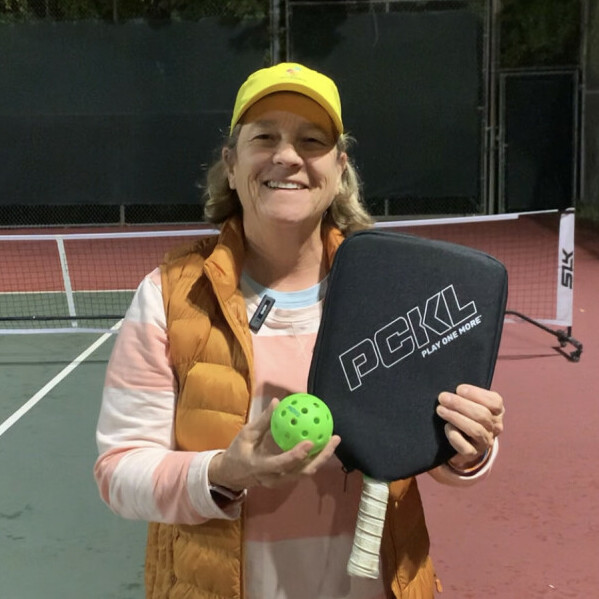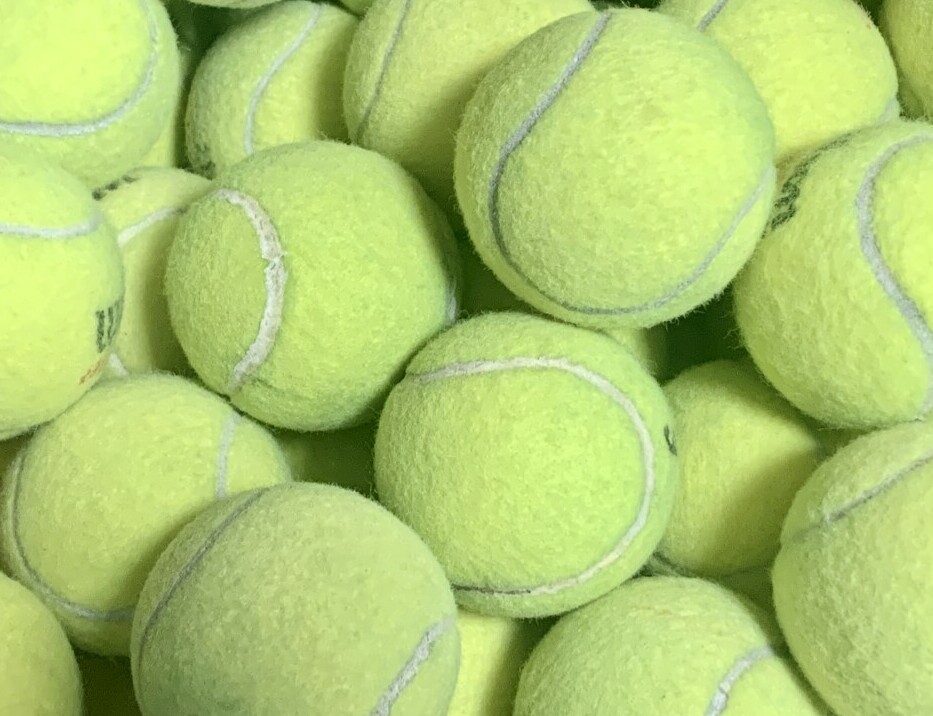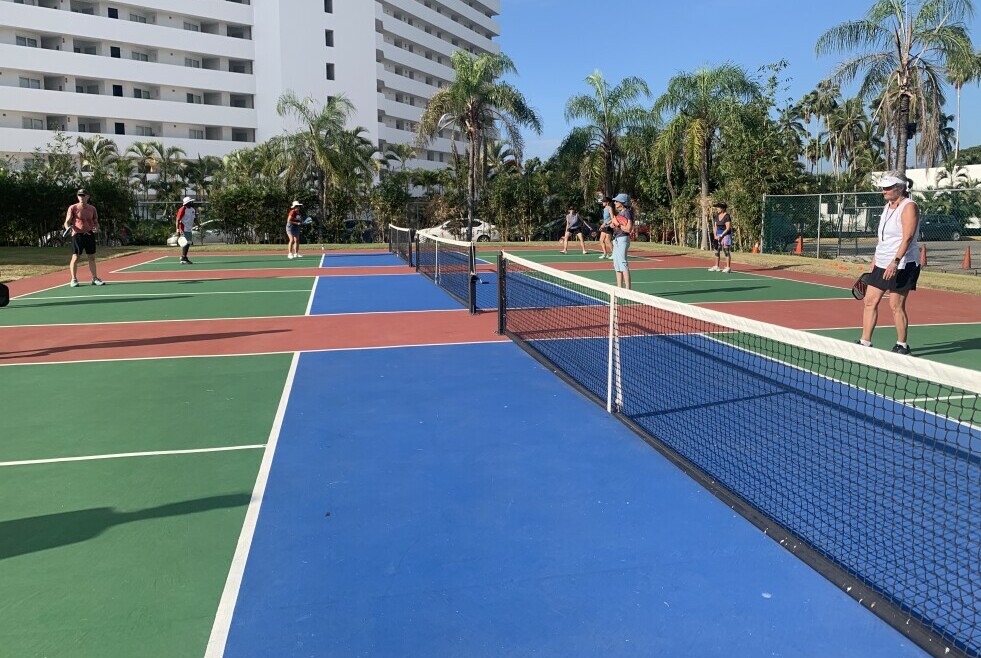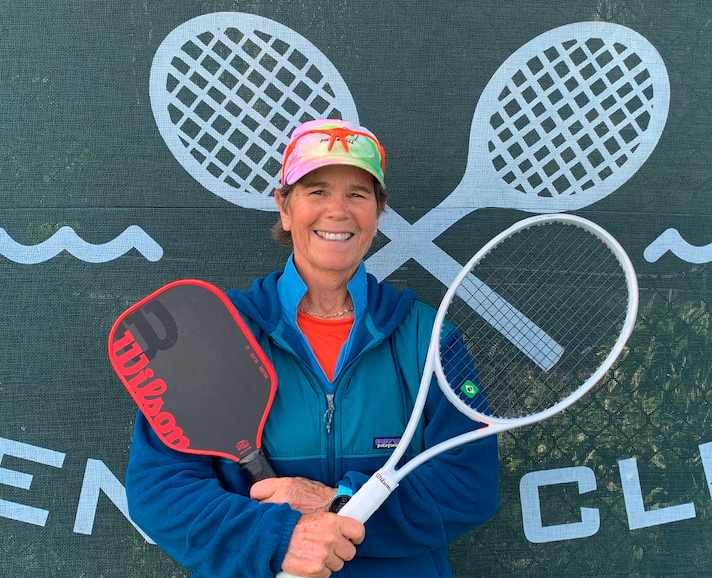I am a long-time tennis player and have played competitively since 1968 and a long-time USPTA tennis teaching pro since 1985. When I was asked to play pickleball seven years ago, I had never heard of it. I soon found out what the differences between tennis and pickleball were during my first time on the court!
Before heading to the pickleball court, I watched a few YouTube videos about the game, scoring, and terminology to be sure I had a quick and basic understanding of pickleball. As a tennis pro, I did not want to be caught off guard. It might ruin my reputation after all. I say that with a big grin on my face!

Now, this difference isn’t just about comparing court sizes or the equipment used; it’s also about delving into the nuances that make each game distinct. From the balls, paddles, and rackets to the nets and strategic zones, these elements influence how the games are played and what skills are necessary to excel.
You’re going to discover how the interplay between these factors translates into two uniquely engaging sports. Whether you’re a seasoned tennis player curious about pickleball or a pickleball enthusiast wondering how your game stacks up against tennis, I’m here to help you with a clear breakdown of their differences. Tennis players usually catch on quickly to pickleball but get schooled by experienced pickleball players when they start.
In my opinion, understanding these differences is essential, not just for player technique but also for appreciating each sport’s character. So, let’s set the scene for an exploration of the court itself as we transition smoothly into discussing the specific sizes and layouts that set these two exciting games apart.
Sizing Up the Game: Tennis vs Pickleball Courts
Alright, let’s talk court size. Tennis is traditionally played on a stretch of 78 feet long and 27 feet wide for singles matches, with doubles alleys extending the width to 36 feet. That’s a lot of court to cover!
Now in pickleball, it’s a different story. The court measures a cozier 44 feet long by 20 feet wide. Essentially, it’s the same size as a badminton court. This size difference isn’t just for show; it fundamentally changes the game dynamics, making pickleball a more accessible sport for a broader range of ages and abilities. The smaller court size is easier to cover!
Can We All Be Friends?
Next up, we adapt. Pickleball courts can often be found doubling up on existing tennis courts or even in gymnasiums and backyards. Transforming an underused tennis court into a pickleball hub? That’s a win for community sports and a testament to the resourcefulness of pickleball enthusiasts. I know the extra lines painted on the court can be a distraction and also occasionally annoying, but the hybrid court is important as pickleball grows. More designated pickleball courts are needed! And tennis players don’t want their courts taken away!
Here’s the bottom line: The tennis court feels like a vast battlefield, while the pickleball court offers a more intimate arena. This intimacy plays a significant role in the social aspect of pickleball, fostering close-knit communities and spirited camaraderie. There is certainly more gabbing and bantering on the pickleball court before, during, and after a point than in tennis, which makes pickleball a very social experience.

Equipment Evolution: Balls, Paddles, and Rackets
You’re going to find out about some fascinating intricacies that differentiate the tools of the trade between tennis and pickleball. Let’s explore how the equipment used in each sport distinctly shapes the player’s experience.
Starting with tennis, a tennis ball is a small, hi-vis fuzzy felt sphere, specifically designed to travel at high speeds and bounce with various spins; factors that influence how the game is played strategically. The pressurized interior of a tennis ball is key to its liveliness, contrasting with the ‘jolting’ sound and aerodynamics of a ball made with holes called a pickleball ball. Tennis balls go “dead”, losing their bounce over time. Pickleballs can crack and need replacing regularly.
A pickleball is quite the oddball, in a good way. It’s a hard plastic whiffle-type ball, characterized by 26 to 40 round holes. These holes, believe it or not, affect everything from the ball’s flight path to the pace of the game. Pickleballs come in two main types: indoor balls (26 holes), with softer and slower features, and outdoor balls (40 slightly smaller holes), built for a hard concrete surface and play a lot faster, especially with a “speed up” point. Eye protection is recommended!
Racket, Racket, Racket vs Paddle, Paddle, Paddle
What’s in a Name? Click here for a fun short!
Let’s not forget about what we’re swinging! In tennis, the racket is a significant piece of the game, with its strung surface providing the power and spin considered essential in modern play. Pickleball paddles, on the other hand, lack strings and are solid and smaller than a tennis racket, promoting a game that’s more about placement than power. The material of a pickleball paddle—wood, composite, or graphite—also plays a pivotal role in how the game is experienced, affecting factors like touch, control, and power. Those two distinct (racket vs paddle) surfaces are very different in feel and result.
That’s going to include a shift from the sonic ‘pop’ of a tennis ball’s impact to the distinct ‘whack’ of a pickleball. This sound, largely due to the paddle and ball design, doesn’t just alter the auditory landscape of the game; it also influences how players perceive and react to their shots. Many folks with homes within earshot of a pickleball court and its sounds are not happy campers these days. The pickleball ball sound is not pleasant. The quiet sight and sound of Wimbledon can often soothe a tennis player’s soul. Pickleball is all about energy and an anything-goes vibe.
<
This deep dive into the equipment not only showcases their physical differences but underscores a fundamental aspect: tennis is a game that often revolves around power and placement, whereas pickleball emphasizes precision, strategy, and patience. This difference in focus is directly attributable to the variance in the equipment used. It’s much more difficult to control pickleball’s hard paddle and plastic ball with holes than a tennis racket with its strings and the fuzzy ball. It’s basic physics!
Navigating the Net: Contrasting Net Heights and Game Rules
So you’ve got a handle on the sizes of the courts and the equipment used in tennis versus pickleball. Now let’s shine a spotlight on the nets. The height and structure of nets in these two sports might seem similar at a casual glance, but they’re constructed with specific game dynamics in mind.
In the world of tennis, the net stands at a steadfast 36 inches at the center and 42 inches at the net post. The net is taught and often measured by tennis players before a big match. However, in pickleball, the net’s height is lower in the middle at 34 inches and slopes upward to 36 inches at the end posts. Many pickleball players are unaware of what the net height is supposed to be and never check it when they play. A rolling net has adjustable velcro that can be tightened on many courts during rec play. It is a common sight to see a low net in pickleball because people rush out to play forgetting to check the nets. And many pickleball players just don’t care.
Get your very own rolling pickleball net! It’s portable! Take it with you!
As an Amazon Associate, I earn from qualifying purchases.
The Art of Serving
The rules concerning the serve in pickleball are rather idiosyncratic. An underhand serve has to check off three boxes: the paddle must contact the ball below the waist, the trajectory of the swing needs to be upward, and at no point should the highest part of the paddle be above the wrist–all measures to keep the gameplay accessible and enjoyable. If a tennis player uses a standard forehand swing on their serve, they may be serving illegally in pickleball. The straight take back of the tennis racket may be the culprit and a fault may be called by the opponent. I see this mistake happening with tennis converts to pickleball frequently.
<
Additionally, pickleball has another serving style known as the drop serve, affording players more versatility with their swing direction. This tweak offers a more relaxed approach to serving, yet it still demands skill and strategy and was put into use to allow better serving results for beginners. Unlike tennis, with its double-fault leeway, pickleball gives you only one chance to serve the ball correctly, ramping up the pressure and excitement from the get-go.
Another big difference between tennis and pickleball is that in tennis a point is won or lost after each point played. In pickleball, one can only earn a point as the serving team. This is how the game of volleyball used to be, where only the serving side scored. This holds for pickleball unless rally scoring is used. More on rally scoring in a future post.
The Rhythm of the Rally: Game Dynamics and Serving Strategies
Tennis and pickleball, at their core, are about the exchange between players, known as the rally. It’s also called a “send and receive” type game. It’s here, in the rapid-fire back and forth, that both games come alive. Yet, each sport approaches these rallies with slightly different rules that dramatically influence how the game is played.
In pickleball, you’re going to find out about the quirky two-bounce rule. Simply put, each side must let the ball bounce once before volleys (a volley is a shot hit in the air before it bounces) are allowed. This means that after the serve, the receiving team must let it bounce before returning, and then the serving team must also let it return bounce before play continues. This rule slows the initial pace, allowing strategy rather than speed to take center stage in those first few critical exchanges. No serving and volley allowed in pickleball.
It also gives an immediate advantage to the receiving side since they will approach the net sooner than the serving team can. In tennis, the serving team is on defense, and in pickleball, the receiving team is on offense. Many tennis players have a difficult time with this concept at first since it is the other way around in tennis
For serves, tennis traditionally leans toward a power game, where players toss the ball in the air before hitting an overhand serve. They have two chances to get it into the service box. The first serve is usually the faster attempt and the second serve is slower, sometimes hit with more spin to ensure its placement in the service box. On the flip side, pickleball serves with an underhand motion takes away some of the physical power of the shot, and with one chance only, puts a bit of pressure on the server to get the ball in play. Some pickleball players are trying to figure out how to outsmart their opponents with spins and placement to keep them guessing, a very good strategy.
When it comes to serving strategies in tennis, you’ve got a second serve to fall back on should the first go out of bounds. That extra chance allows for a higher-risk first serve. Meanwhile, pickleball doesn’t afford such luxury. You have only one chance to serve, which increases the pressure but also tempers the aggressiveness commonly seen in tennis serves.
Since the server has to stay back in the court after they serve because of the two-bounce rule, they will be forced to hit what is called a third shot after the initial two exchanges. The ideal shot is a third-shot drop. The other choice is a third-shot drive.
Watch this video to explain how the THIRD SHOT DROP is hit!
Next, let’s explore a distinctive aspect of pickleball that adds a layer of strategy and camaraderie unique to the sport: The Kitchen. This curious term refers to the non-volley zone right at the net, and trust me, it’s a game-changer. It’s the biggest difference between tennis and pickleball.
The Non-Volley Zone AKA The Kitchen
Measuring from the net into the court, the non-volley zone is 7 feet deep. While any player can stand there at any time, one particular mistake (also known as a fault) can occur frequently among tennis players who learning pickleball. When taking a shot out of the air ( a volley) you can not be in the NVZ while hitting that shot, or fall into the NVZ after you’ve hit that shot momentum takes you there. This mistake happens to many tennis players because in tennis they can run right up to the net and hit a shot if they want. No so in pickleball.
Here is a link to the official pickleball rule book in PDF form that you can download.
Another shot that takes place just behind the NVZ line is the dink shot. While drop shots are part of tennis, this dink shot is used by pickleball players as if they are playing chess. One shot can outmaneuver the next. The dink is usually a softer type of shot, sometimes with spin and hopefully, one that bounces low in the NVZ. A high ball will be smashed, so low is best.

Wrapping Up: The Courts Await
I hope that you’ve enjoyed this comparison between tennis and pickleball as much as I have. It’s fascinating to see how two sports, seemingly similar with their rackets and courts, diverge into two distinct experiences. Tennis, with its long-standing tradition, offers a game of physical endurance and skill, where strategies can unfold on large courts. Pickleball, the new kid on the block, brings its unique charm with smaller courts, quirky rules like the two-bounce rule, and the friendly confines of The Kitchen.
What stands out is not just how these games differ, but also how they provide avenues for enjoyment and exercise to people from all walks of life. Whether you’re a seasoned tennis player or a newbie in pickleball, there’s room for you to swing that racket or paddle and have a great time. Tennis has long been known as a sport for a lifetime. And pickleball encourages people from all sports backgrounds with its broad appeal and social atmosphere.
Remember, the most important part is to choose something that resonates with you. Are you looking for the rigor and challenge of tennis or the fast-paced, social nature of pickleball? Don’t worry too much about perfection on your first attempt; you can always adjust your approach down the road. While there are many differences between tennis and pickleball, they are both games that provide fun, exercise, and enjoyment.

If you’re ever in doubt or need a few tips and tricks, the Z Sisters Pickleball Channel is here to help you out. We’ve got everything from tutorials to tips and product reviews, and we’re all about growing this enthusiastic community. Don’t forget to subscribe, like, and hit the bell for notifications. You won’t want to miss out on our new videos that are sure to up your game, no matter which one you choose. See you on the court!

